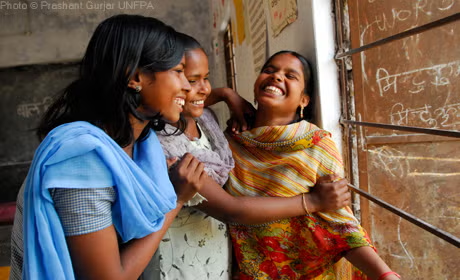According to the Sample Registration System (SRS) Statistical Report 2023, India’s TFR dropped to 1.9, remaining below the replacement level of 2.1.
Education and literacy play a pivotal role in advancing gender equality, empowering women, and shaping reproductive health and family planning across the world. Data from 2000 to 2020 reveal a steady rise in literacy rates alongside a gradual decline in fertility rates, underscoring the strong inverse relationship between education and fertility.
The Total Fertility Rate (TFR), which measures the average number of children a woman is expected to have during her reproductive years (15–49 years), has seen a marked decline in India.
According to the Sample Registration System (SRS) Statistical Report 2023, India’s TFR dropped to 1.9, remaining below the replacement level of 2.1. Yet, significant differences emerge when fertility is examined by education levels: the TFR was 3.3 among illiterate women compared to just 1.8 among literate women.
The replacement level TFR is measured as the number of children each woman should have for each generation to replace the previous generation’s population.
The educational gradient within literate women is also striking. In 2022, women with no formal education had a TFR of 2.4, while those with primary and middle education recorded 2.3 and 2.1, respectively. Women with Class X education had 1.9, Class XII had 1.8, and those with graduate and above education had the lowest at 1.6. Clearly, higher education levels delay marriage, increase workforce participation, and foster a preference for smaller families.
Adult Literacy Rate, defined as the proportion of individuals aged 15 and above who can read, write, and understand simple statements, has consistently risen in India.
In 2023, 90.5% of women aged 15–49 were literate, compared to only 9.5% who were illiterate. Among the literate, 11.5% had attained graduate or higher degrees, while 19.4% studied up to Class X and 20% up to middle school.
Regional Variations in Fertility
TFR across states highlights the role of socioeconomic and cultural factors. Bihar recorded the highest TFR among both illiterate (4.2) and literate (2.6) women, reflecting persistent educational and economic challenges. In contrast, Delhi and Telangana had the lowest TFR for illiterate women (1.9), with Delhi also reporting the lowest for literate women (1.2). Kerala exemplifies the positive impact of education, where only 0.4% of women are illiterate and 29.1% hold graduate or higher degrees, translating into one of the lowest fertility rates. By comparison, Bihar has the highest share of illiterate women (18.2%) and the lowest proportion of women with graduate education (3.4%), sustaining higher fertility.
Reasons for the Inverse Correlation
-
Socioeconomic Development: States with higher incomes, greater urbanisation, and better employment opportunities, often correlated with higher female literacy—report lower fertility.
-
Educational Attainment: Higher education delays marriage, increases economic independence, and encourages smaller families.
-
Cultural and Social Norms: Traditional norms and beliefs around early marriage and larger families remain strong in less developed and rural regions, contributing to higher fertility rates. In contrast, progressive states like Kerala and Tamil Nadu have embraced family planning and gender equality.
-
Health Systems and Contraceptive Access: States with robust healthcare networks and better availability of contraceptives see fewer unintended pregnancies and lower fertility rates.




